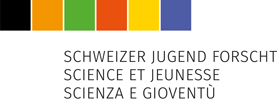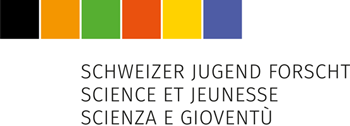Physik | Technik
Maximilian Theimer, 2003 | Oberwil, BL
Additive manufacturing, namely filament 3D printing, is becoming a widely used technology in the consumer space. But how far can 3D printing with consumer materials at home go? This thesis sets out to answer this question by 3D printing a BMX sized bike frame. The design of the frame had to balance rigidity and weight while ensuring sufficient strength to be ridable. Generative design was the optimum method to achieve this. Furthermore, 3D printing techniques like nozzle diameter, print orientation and filament types were analysed, so that the strongest combination of part geometry and 3D printing technique could be developed. As large form factor 3d printers are not available in the consumer space, a CNC mill was modified into a 3D printer large enough to produce a small bike frame. Using 3D printing as an alternative manufacturing method comes with several advantages. First, with 3D printing producing complex geometries, which would be almost impossible to produce any other way, becomes trivial. This enables the production of any computer-generated optimal shape in a one-step production process. Using 3D printing to manufacture the frame also allows for limitless individual customization to the needs of the consumer.
Introduction
For this thesis I wanted to find out how a BMX sized bike frame can be designed and manufactured to make it as robust as possible. The following leading question was chosen: How can a BMX sized bike frame capable of withstanding 65 kg of mass be 3D printed at home?
Methods
Since consumer 3D printers are too small to print the parts for the frame, I had to build my own large form factor 3D printer. A printer with approximately 1 m2 of print area was required. For this I adapted The MPCNC LowRider2 CNC, which itself is already a mostly 3d printed DIY CNC. I added a new mainboard and firmware, special closed-loop steppers as well as a hot end optimized for fast strong printing rather than high detail printing. For the CAD and the topology optimization Fusion 360 and its generative design suite were chosen, and preliminary material tests were run to select the optimum filament. The frame was optimized with Fusion 360’s generative design based on user defined forces (load cases) and key features. Prior to printing, the computer-generated shapes were eventually modified to reduce overhangs and improve printability.
Results
The printed frame featured an optimized geometry, was light weight, had a customized size to my requirements and supported my body weight of 65 Kg. Approximately 2.3 kg of filament were used to print the frame parts, which took a total of 56 hours. The frame fully supports the rider’s weight of approximately 65 kg without deforming. While riding, when lateral forces are applied to the seat for example by shifting the body weight off-centre, a sideways lateral flexion of the frame was noticeable, which resulted in a slight instability.
Discussion
Even though the frame was a bit weak when dealing with the lateral forces on the seat, it was still rigid enough to be ridable. The high lateral flexibility is in part because PLA, the plastic it has been printed out of, is like almost all plastics inherently softer and weaker than aluminium or steel. In addition, the frame design was computer generated using parameters and static load cases focussing mainly on the forces of sitting on the bike rather than riding the bike. When riding, the shifting of the body weight and other forces severely flex the frame in every axis. The geometry generated by the computer however, being optimized, is only strong with regards to the loads that the frame has been generated with.
Conclusions
Since this frame has been printed with the most broadly available normal filament on a 3D printer at home and was still rigid enough to withstand a rider’s weight of 65 kg, this shows that consumer 3D printed bikes have great potential for improvement. By adding more specific, dynamic load cases, a new frame geometry could be generated which takes into account lateral forces. By using filaments specifically designed for mechanical applications for, example Nylon or Polycarbonate blends, the overall stiffness can be improved significantly. With a slightly better topology and more rigid filaments, the frame should easily be strong enough to be ridable in almost all conditions, while still being fully customizable to the rider in terms of features, size, strength, and weight.
Würdigung durch den Experten
Hanspeter Keel
Die additive Fertigung (3D Druck) ist eine aktuelle Technologie mit grossem Zukunftspotential. Die vorliegende Arbeit von Maximilian Theimer zu diesem Thema hat mich in ihrem Umfang und der Ausarbeitung beeindruckt. Die Forschungsfrage wie weit ein üblicher 3-D-Drucker im Heimgebrauch eingesetzt werden kann, wurde wissenschaftlich behandelt. Der Anwendungsfall mit einem Fahrradrahmen ist originell und zeigt die Grenzen und Möglichkeiten praxisnah. Mit dem Bau einer eigenen Maschine wurde der Innovationsgehalt der Arbeit zusätzlich erhöht. Ich gratuliere zu dieser gelungenen Arbeit.
Prädikat:
hervorragend
Sonderpreis Aldo e Cele Daccò – European Union Contest for Young Scientists (EUCYS)
Gymnasium Oberwil
Lehrer: Bernhard Walz



